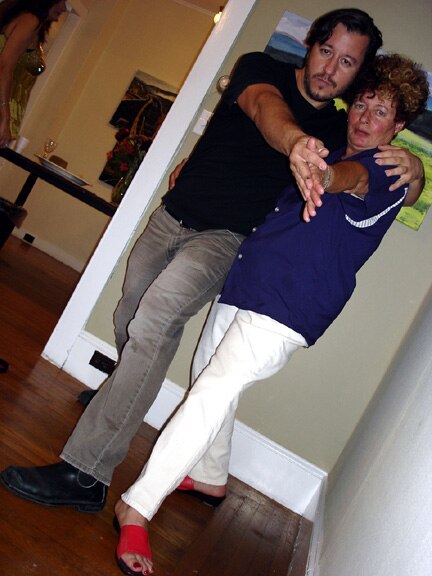Revolution. Romance. Ideology. Betrayal. Torture. Art. Escape. Freedom.
These were the things I heard about over a period of 25-years by a woman, an artist who came from another place, another time. Some of what Inverna Lockpez said to me was alien. I never knew what a revolution was. I will never know what it’s like to come to America for the very first time. Sometimes I asked Inverna for more details of her dramatic struggles and escape from Cuba but she didn’t want to revisit the past too closely. As I got older, I came to understand that some of the things we experience in life are put in a box for a reason. Instead, Inverna would express herself on canvases and decorate walls and celebrate Spanish artists and dance on restaurant tables, responding to the here and now rather than mourn the past.
You can’t change the past.
During my young adult years, Inverna, who was a minimalist painter and art gallery director/curator, became my mother’s best friend, and soon became like a second mother to me. Inverna saw that I wanted to draw stories and encouraged me to follow my dreams of becoming a professional cartoonist and observed as I illustrated other people’s real life stories, including my own. Over the years, I kept a mental checklist of the various and mysterious anecdotes Inverna shared about her experience in Cuba and started to knit together a narrative tapestry. However, there were giant plot holes and I didn’t understand some of things that happened to her. I needed to know how, what, and why.
It was during my time drawing THE ALCOHOLIC that I asked Inverna if she would write her story. She saw that I took great care with the truth in my collaborations with Harvey Pekar and Jonathan Ames and how candid I was in my own semi-autobiographical comics, and she decided it was finally time to purge and tell her tale, in a fictional form. Weeks later, I found out the rest of her story and knew I had to share it with the world.
After we sold Inverna’s story to Vertigo, I knew it would be the most challenging project of my career, thus far. Inverna is strong-willed and used to having final say when it comes to her work and to collaborate is an entirely different dance. I wanted this book to look like an artifact you could excavate from the sands of 1960’s Cuba while alluding to the universal films of Preston Sturges. So, I elected to abandon my ink brush and only pencil the story while limiting the color palette. After much deliberation, we arrived at gray and red tones with the colorful mastery of Jose Villarrubia, and the seasoned guidance and editorial confidence of Joan Hilty. With these key players in place, I knew we had a good chance at realizing Inverna’s heartbreaking story, CUBA: MY REVOLUTION.
Sometimes you never get to know why some things happen. Sometimes you have to express yourself freely and in public to let go of what chokes you at night. Maybe we never come to fully understand what happened but we can talk about it, write about it, and draw it in hopes of healing the pain, knowing that you can’t change the past but you can certainly steer the future.
 Come back tomorrow as Emmy award-winning artist, Dean Haspiel discusses the process of creating the cover.
Come back tomorrow as Emmy award-winning artist, Dean Haspiel discusses the process of creating the cover.

Editorial
CUBA: MY REVOLUTION by Dean Haspiel
BY: DCE Editorial
Tuesday, September 14th, 2010



















